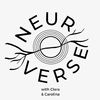
Brad and I discuss his battle-tested, age-defying cognitive model for how we learn and store concepts by forming and rearranging clusters, how the model maps onto brain areas, and how he's using deep learning models to explore how attention and sensory information interact with concept formation. We also discuss the cognitive modeling approach, Marr's levels of analysis, the term "biological plausibility", emergence and reduction, and plenty more.
Notes:
- Visit Brad’s website.
- Follow Brad on twitter: @ProfData.
- Related papers:
- Levels of Biological Plausibility.
- Models in search of a brain.
- A non-spatial account of place and grid cells based on clustering models of concept learning.
- Abstract neural representations of category membership beyond information coding stimulus or response.
- Ventromedial prefrontal cortex compression during concept learning.
- The Costs and Benefits of Goal-Directed Attention in Deep Convolutional Neural Networks
- Learning as the unsupervised alignment of conceptual systems.
05/15/20 • 107 min
Featured in these lists
Generate a badge
Get a badge for your website that links back to this episode
<a href="https://goodpods.com/podcasts/brain-inspired-206251/bi-070-bradley-love-how-we-learn-concepts-21442026"> <img src="https://storage.googleapis.com/goodpods-images-bucket/badges/generic-badge-1.svg" alt="listen to bi 070 bradley love: how we learn concepts on goodpods" style="width: 225px" /> </a>
Copy
